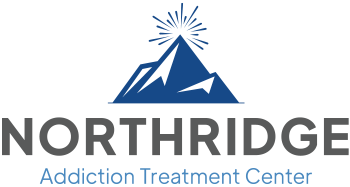Strattera vs. Adderall: What’s the Difference?

Despite treating the same condition, the two most common drugs used in treatment for attention deficit hyperactivity disorder (ADHD) are Adderall and Strattera, although they have notable differences.
Treating adult ADHD can be difficult and sometimes requires a trial-and-error approach with ADHD drugs. On rare occasions or in resistant cases of ADHD, doctors will prescribe Strattera and Adderall simultaneously and adjust the doses accordingly.
What Is Strattera?
Strattera is the name brand for the drug atomoxetine. Strattera is a selective norepinephrine reuptake inhibitor (SNRI), which is the same drug class as antidepressants, and doctors sometimes prescribe it as one off-label.
Strattera is one of the few non-stimulant prescription medications for treating ADHD and works to regulate how the brain uses existing norepinephrine, the chemical responsible for regulating focus, attention span, and nerve impulses throughout the central nervous system.
Strattera comes in oral capsules with doses ranging from 10 to 100 mg, depending on the patient’s needs. Because Strattera naturally stays in the body for long periods, there is no extended-release formula. People taking Strattera must take it continuously at regularly scheduled times to remain effective.
Strattera is less habit-forming than stimulants used to treat ADHD, but it still has the potential for abuse and addiction, especially psychologically. If you plan to stop taking Strattera, it is vital to consult a medical professional to discuss tapering off; you should never quit cold turkey.
Strattera vs. Adderall
Despite each belonging to a different drug class, Strattera and Adderall are both approved by the Food and Drug Administration (FDA) as treatments for attention deficit hyperactivity disorder (ADHD) in adults, children, and adolescents.
After their shared purpose of treating a medical condition, the similarities mostly end.
Below is an overview of important information about Strattera and Adderall to compare and contrast. Remember that each list is for information purposes only, and you should never attempt to self-medicate for medical conditions.
Strattera
- Name brand form of atomoxetine
- Non-stimulant
- Not a controlled substance
- It takes several days or weeks to be effective
- Low potential for abuse and addiction
- Requires a daily dose
- Prescribed only as an immediate-release oral capsule
- It needs to be tapered off if you want to quit
- Dangerous alcohol and drug interactions
- Unsafe while breastfeeding
Adderall
- Name brand combination of dextroamphetamine and amphetamine
- Stimulant
- Schedule II controlled substance
- Works immediately
- High potential for abuse and addiction
- No required a daily dose
- Prescribed as immediate-release Adderall oral tablets or Adderall XR (extended-release)
- It has to be tapered if you want to quit after taking it regularly
- Dangerous drug and alcohol interactions
- Unsafe while breastfeeding
Stimulants like Adderall are generally accepted as the faster, more effective option to treat attention disorders; however, Strattera can be an effective option for people who have an extreme reaction to Adderall or a history of substance abuse.
In some cases of ADHD that don’t respond to just one medication, doctors will prescribe a combination of Strattera and Adderall.
You should always keep track of the positive and negative side effects of any medications you take and communicate them to your doctor so the dosage can be adjusted as needed.

Side Effects
Despite their different mechanisms of action, Strattera and Adderall share some common side effects because of their chemical interactions.
Shared common side effects of Strattera and Adderall include:
- Headaches
- Nausea
- Sweating
- Diarrhea
- Dry mouth
- Dizziness
- Decreased appetite
- Reduced sex drive
Shared long-term side effects include:
- High blood pressure
- Cardiac damage
- Slowed growth in children and adolescents
- Liver and kidney damage
- Dependence and addiction
In cases of pre-existing mental health conditions, both medications can cause a worsening of mental health conditions, especially depression and anxiety. Most side effects will resolve as a person acclimates to the drug, and doctors will adjust doses accordingly. However, because of their unique mechanisms of action, Strattera and Adderall have side effects specific to themselves.
Strattera Side Effects
Strattera requires time to reach workable levels in the body, and side effects may increase as it builds up.
Common side effects of Strattera include:
- Fatigue
- Abdominal cramping
- Constipation
- Flatulence
- Difficulty urinating
- Mood swings
- Hot flashes
- Tingling in extremities
- Heartburn
- Muscle pain
- Vivid dreams
- Changes in sleep patterns
Notably, children and adolescents taking Strattera report increased suicidal thoughts and behaviors. Any changes in mental health and behavior should be taken seriously and require professional help.
Adderall Side Effects
The effects of Adderall tablets kick in relatively quickly, especially with immediate-release tablets, though Adderall XR side effects may last longer.
Adderall side effects include:
- Flushing or red, splotchy skin
- Rashes or hives
- Increased body temperature
- Runny nose
- Strange or unpleasant tastes
- Increased blood pressure
- Muscle spasms or twitching
- Insomnia
- Restlessness
Prescription drug abuse involving stimulants like Adderall is increasing among young adults and can easily lead to an overdose. Adderall overdose symptoms are similar to intense side effects, making it vital to seek immediate medical attention if they become unbearable or life-threatening.
ADHD Treatment Options
If you need attention deficit hyperactivity disorder (ADHD) treatment, you should talk to your doctor about your treatment options and concerns.
While medication effectively treats ADHD, over time, people may develop tolerance making it less effective. Some people also shy away from medicine long-term for fear of becoming dependent or developing a substance use disorder.
Ultimately the best ADHD treatment options involve addressing contributing factors and behaviors through evidence-based therapies and exercises that offer long-term results. Cognitive behavioral therapy can help reframe thought patterns and coping mechanisms related to ADHD, and individual therapy can address the emotional difficulties that living with ADHD can cause.
Treatment for Strattera and Adderall Abuse in Northridge, California
Addiction to prescription medications like Strattera and Adderall is increasingly common among people who abuse prescription drugs to self-medicate their ADHD and other conditions. But there are better ways to manage addiction and co-occurring mental health disorders than abusing medication.
At Northridge Addiction Treatment Center, we take a whole-person approach to address the immediate physical effects of addiction and treat the underlying causes of your substance use and co-occurring disorder.
Our residential treatment facility offers a supportive, serene environment that allows you to focus on healing the roots of your addiction, not just the symptoms, and learn healthy habits and coping skills to avoid relapse.
We offer onsite medical detox with 24-hour supervision from a licensed medical staff to face withdrawal symptoms safely with care and empowerment. Upon admission, our compassionate, licensed, and experienced addiction specialists develop a personalized treatment plan with you that caters to your needs and goals for a life in recovery.
Reach out to take the first steps to reclaim your life. Our treatment specialists are eager to get you the help you need.
Find Meaningful Recovery
Our caring and compassionate specialists are eager to help you comfortably navigate this journey to recovery. Our individualized treatment plan, programs, and therapies may be a perfect match for you or your loved one. Let us assist you in living the happy life you deserve. It starts with a phone call.




